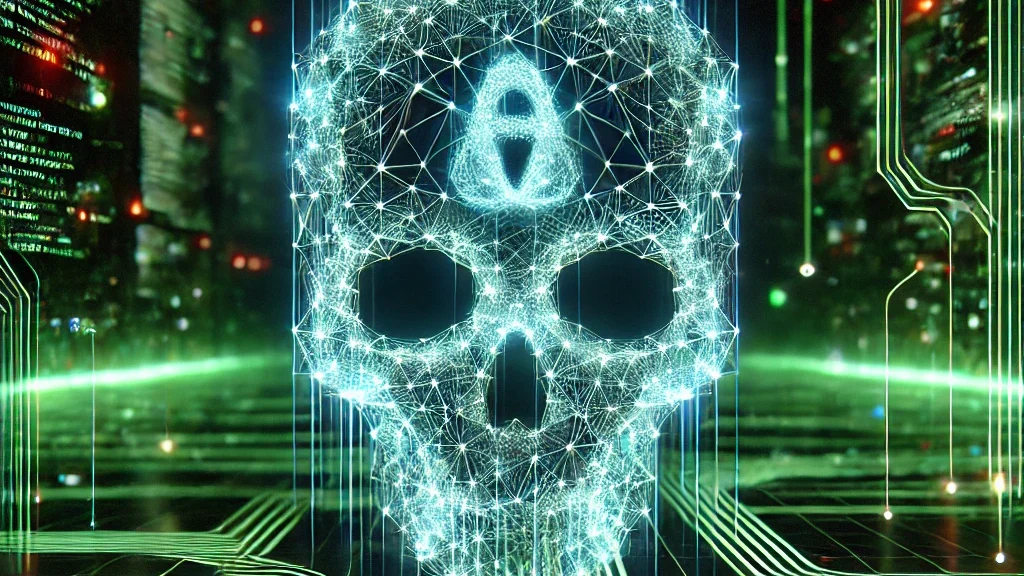
The Risks of AI-Generated Malware
Artificial Intelligence (AI) has revolutionized countless industries, from healthcare to finance, but its capabilities also pose significant challenges in cybersecurity. One of the most alarming threats is AI-generated malware, which leverages advanced machine learning techniques to become more sophisticated, adaptive, and difficult to detect. Here’s an in-depth exploration of the risks and implications of this emerging threat.
What is AI-Generated Malware?
AI-generated malware refers to malicious software created or enhanced using artificial intelligence techniques. Unlike traditional malware, which relies on predefined instructions, AI-powered malware can:
- Adapt to different environments, avoiding detection by learning how antivirus systems work.
- Evolve by rewriting its code to bypass security measures.
- Imitate legitimate software to trick users into downloading or executing it.
Key Risks Associated with AI-Generated Malware
- Sophisticated Evasion Techniques
AI-generated malware can analyze antivirus patterns and behavior to avoid detection. For example, it might generate polymorphic code that changes its structure every time it runs, making it difficult for signature-based detection systems to identify. - Automated Attacks at Scale
AI can automate the creation of malware variants, allowing cybercriminals to deploy thousands of unique attacks in a short amount of time. This scalability overwhelms traditional defense mechanisms, increasing the success rate of attacks. - Targeted and Personalized Attacks
AI can analyze vast amounts of data from potential victims, enabling malware to execute highly targeted attacks. For instance:- It might generate phishing emails tailored to individuals using their social media activity.
- Malware could exploit specific vulnerabilities in a company’s network infrastructure.
- Use of AI to Evade Behavioral Analysis
Modern antivirus solutions often use behavior-based detection, which monitors how programs operate to identify malicious activity. AI-generated malware can mimic normal behavior, staying dormant or executing tasks in a way that seems harmless until the optimal moment to strike. - AI-Powered Ransomware
AI could enhance ransomware by analyzing a victim’s files to identify the most valuable ones or setting the ransom amount based on a victim’s financial history. This precision increases the likelihood of payment. - Weaponization of AI for Autonomous Cyber Attacks
AI-generated malware can function autonomously, making decisions without human intervention. For instance, it could independently scan networks, find vulnerabilities, and exploit them without requiring manual oversight.
Real-World Examples and Theoretical Scenarios
- DeepLocker (2018): IBM researchers demonstrated DeepLocker, an AI-powered proof-of-concept malware. It used AI to hide malicious payloads and only executed them when specific conditions were met, such as recognizing a target’s face via a webcam.
- AI-Driven Phishing: Advanced AI models can craft emails indistinguishable from human-written ones, making phishing campaigns more effective.
How Can We Combat AI-Generated Malware?
- AI-Driven Defenses
As attackers adopt AI, defenders must do the same. AI-based cybersecurity tools can analyze massive datasets to detect anomalies and predict potential threats. - Behavioral Monitoring
Systems should focus on detecting unusual patterns rather than relying solely on signature-based methods. AI can enhance this by identifying complex behavioral anomalies. - Continuous Threat Intelligence
Organizations need to stay informed about the latest threats. Collaboration between cybersecurity experts, governments, and private companies is essential for sharing intelligence. - Human-AI Collaboration
Combining human expertise with AI can provide more robust defense mechanisms. While AI can process vast amounts of data, humans excel at contextual understanding and decision-making. - Regular Security Audits and Updates
AI-generated malware often exploits outdated systems. Keeping software up-to-date and conducting regular security audits can mitigate this risk.
Looking Ahead: The Future of Cybersecurity
AI-generated malware represents a paradigm shift in cyber threats. Its ability to adapt, evolve, and scale means traditional defenses may soon be obsolete. To counteract these risks, the cybersecurity community must invest in cutting-edge AI solutions, promote public awareness, and adopt a proactive approach to defense.
While the battle against AI-generated malware is daunting, innovations like Fortifyre—your free AI-integrated antivirus project—can play a crucial role in democratizing cybersecurity and protecting users worldwide.
By understanding the risks of AI-generated malware and taking proactive steps to address them, we can stay ahead of this evolving threat landscape. The future of cybersecurity depends on our ability to innovate, collaborate, and remain vigilant.
